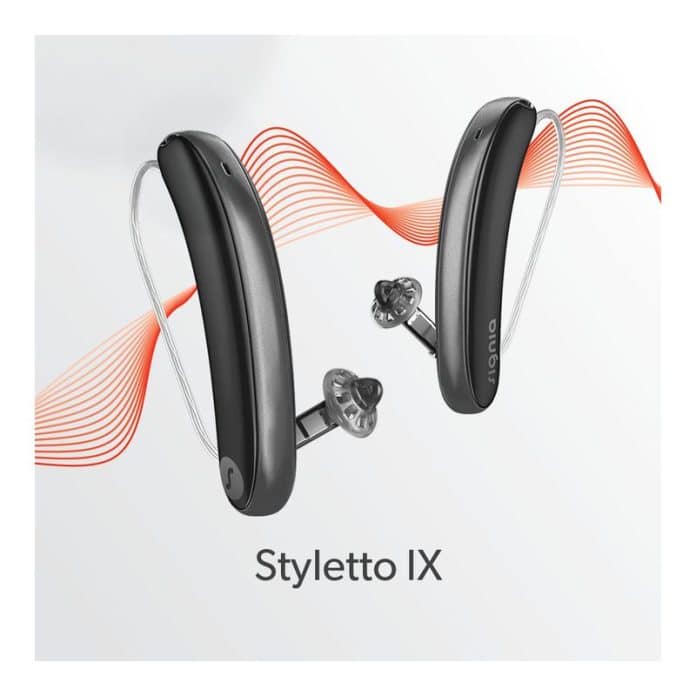How healthy hearing can bring family together, strengthen essential bonds, and boost quality of life.
Think back to the last, large family gathering you enjoyed. Maybe it was Thanksgiving, or a wedding, or a reunion. There were likely multiple generations of family members, a lot of cross conversation, people coming in and out, and more than a little background noise — dishes clattering, music playing, maybe even a game on TV. And odds are — although not for lack of trying — someone had a hard time enjoying themself. Because they couldn’t follow everything that was going on.
Statistically speaking, half of grandparents and great-grandparents, those aged 75-plus, experience significant hearing loss. So do about one in 10 parents, adult siblings, aunts, and uncles, aged 55 to 64. In fact, 13 percent of all Americans 12 and older have some form of hearing loss. So yes, it could have been a son, daughter, nephew, or niece that had trouble communicating with the rest of the family in all that merriment.
This is a significant problem, because family communication is the bedrock of human relationships and hearing is a critical part of effective communication. In the absence of communication and familial engagement, people who experience hearing loss tend to withdraw, leading to social isolation and an increased risk of physical and mental health problems. Therefore, addressing the ways hearing loss impacts family communication is important across generations.
Hearing Loss Hits Home
Hearing loss can be hard on families in ways that differ from the hardships among co-workers, mere acquaintances, or strangers we encounter in daily life. For starters, families are, well, familiar with each other. They’re quick to notice the slightest hint of hearing loss in their loved ones, quick to point it out, and — if they’re the one struggling to hear — quick to ignore suggestions that, “You really should get your hearing checked.”
And when a family member does take action and gets fitted for hearing aids, they’re sometimes less than diligent about wearing them around the people they’re closest to. It’s not that familiarity breeds contempt, but we sometimes take for granted the family communication that’s ingrained in our dearest relationships — some of it even unspoken. That is, until we struggle to communicate.
My father-in-law, a military veteran, struggled with his hearing for 30 years. He acquired hearing aids through the Department of Veterans Affairs, and they make a big difference — when he wears them. Which he does, for instance, at Fourth of July remembrances in his hometown of Chicago. But around his family, we sometimes need to remind him.
Indeed, family members with perfect hearing feel the effects of their loved ones’ hearing loss acutely, sometimes in the form of anxiety, frustration, misunderstanding, or lack of connection. All of which can be dealt with through healthy communication. But we can’t lose sight of the nature of hearing loss itself, its risks, and its unique impact on family communication, which forms the bond that brings family together. Fortunately, advances in hearing technology can ultimately strengthen those bonds.
Missing What’s Important
As an audiologist, it’s been my experience that families often are the impetus for treating hearing loss — a key source of what we call a “salient event” that prompts an individual to act. It’s not necessarily because a family member (helpfully) suggests, “You should really get your hearing checked” when the TV is extra loud, or a family member keeps asking them to repeat themself. Rather, it’s usually because the person experiencing hearing loss couldn’t understand something important to them, like a valedictorian address, or a theatrical performance, or a wedding toast, or a simple, earnest description of what a loved one did last summer, offered around the family table.
It’s therefore important to understand that family communication is unique, and that hearing health is about more than amplifying sound. It’s about enhancing that communication through technology.
Increasingly, those who study hearing health have come to believe that accounting for everyday, noisy conditions is as important — if not more — than making things louder.
In other words, it’s not enough just to amplify sound for those with hearing loss; the goal should be to pinpoint and clarify the particular sound family members want to hear so they can remain engaged and healthy. And because the places where people need to hear change constantly (folks move in and out of conversations, ambient noise fluctuates, acoustics vary), hearing in noise is a dynamic challenge.
Family communication is also dynamic. It can be hyper-informal, with starts and stops, shouts and murmurs, points emphasized or trailing off. It sometimes starts in one room then continues from another, as one participant moves about. And often, it’s not linear. Many people talk at once, making it hard for anyone with hearing loss to follow and participate.
Plus, family communication is by nature multi-frequency, with high-pitched voices and low, sonorous ones, based on age and gender. With hearing loss, it’s usually the high frequencies that dissipate first, meaning people struggle especially to communicate with children and female family members.
Hearing Aids That Understand
Modern hearing technology makes sense of all these family dynamics. Today’s hearing aids can detect the different sounds in a room, identify and enhance the voices of speakers, and reduce background noise so the wearer can focus on what they want to hear. They use advanced processing to split sound into different audio channels, as well as artificial intelligence and sensors to identify people as they enter and exit conversations.
Sophisticated technology platforms like Signia’s Integrated Xperience (IX) process volumes of data in real time in order to enhance conversation as it happens. Specifically, Integrated Xperience knows to boost the volume of active speakers — wherever their voices are coming from — while diminishing ambient noise. That way the wearer can follow everything that’s going on and contribute confidently to the conversation.
Experts believe that even the most supportive family members can’t fully understand the challenges faced by those with hearing loss, like how tired it makes them to try and follow a conversation. Or how background noise adds to the struggle. And they agree that communication among family creates the connection needed to overcome their challenges. Healthy hearing through technology helps maintain that communication.






















